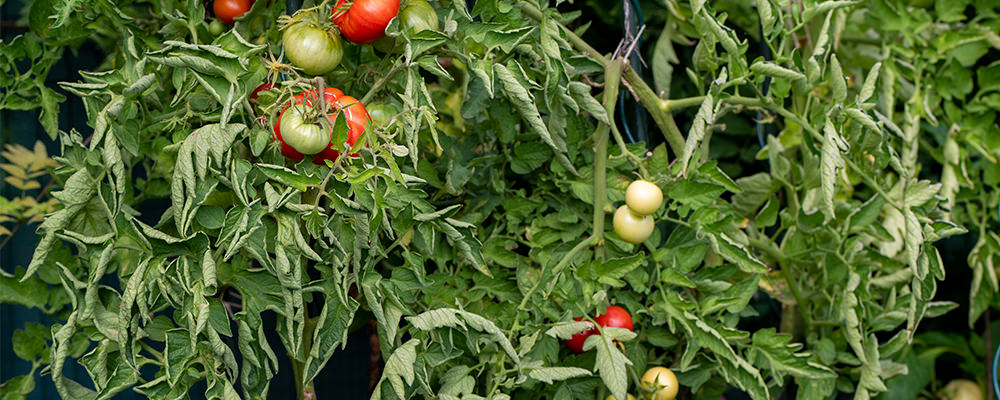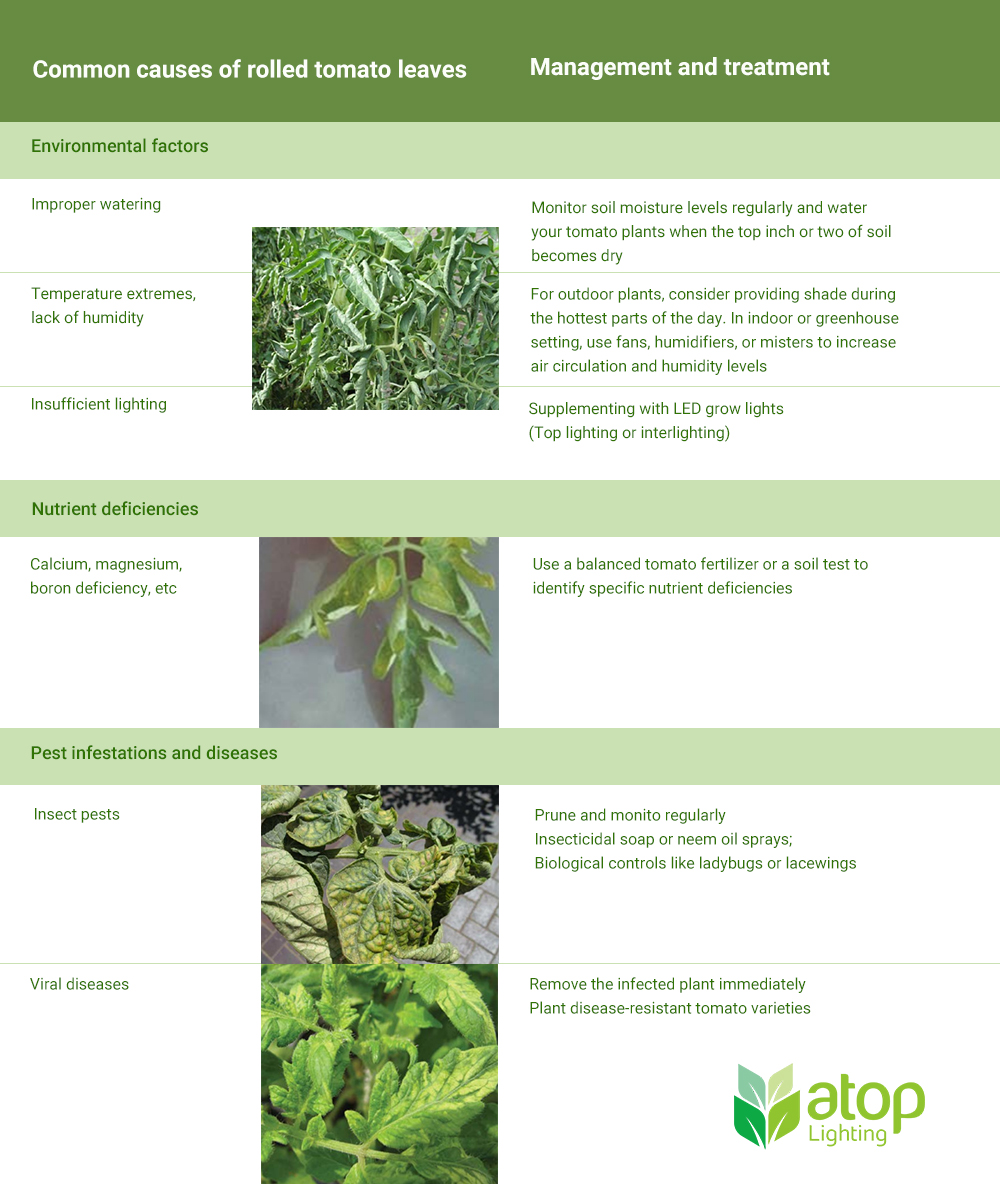Rolled Tomato Leaves? Here's What You Need to Know
Are your tomato plants looking a little worse for wear, with their once lush green leaves curling inward or rolling up tightly? But fear not! We’re here to provide you with all the essential information you need to understand this puzzling phenomenon.
In this blog, we will talk about the causes behind rolled tomato leaves and share practical solutions to get your plants back on track and ensure a bountiful harvest.
Common causes of rolled tomato leaves
Rolled or curled tomato leaves can be caused by a variety of factors, both environmental and biological. Here are some common causes of rolled tomato leaves:
Environmental factors
- Improper watering: One of the most common reasons for tomato leaves rolling or curling is inconsistent or inadequate watering. When tomato plants don’t receive enough water, they may curl their leaves as a defense mechanism to reduce water loss through transpiration. Conversely, overwatering can also lead to leaf curling as the root becomes waterlogged and unable to absorb nutrients effectively.
- Temperature extremes: Tomato plants thrive in warm temperatures, typically between 70°F and 85°F (21°C and 29°C). when they are exposed to excessively high or low temperatures, they may exhibit leaf curling as a stress response. High temperatures can cause the leaves to curl inward to minimize surface areas and reduce water loss, while low temperatures can lead to leaf curling due to slowed metabolic processes.
- Lack of humidity: Tomatoes originate from tropical regions and prefer moderate to higher humidity levels. In environments with low humidity, the plants may curl their leaves to prevent excessive moisture loss through transpiration.
- Insufficient lighting: A lack of light can also contribute to rolled leaves. It is common to grow tomatoes indoors or in a shaded location. The lower leaves may be shaded by upper leaves and cause insufficient lighting.
Nutrient deficiencies
- Calcium deficiency: A lack of calcium can cause the newest leaves to curl and become distorted, often accompanied by browning along the leaf edges or between veins.
- Magnesium Deficiency: Magnesium deficiency can lead to the curling and yellowing of older leaves, starting from the bottom of the plant and working upwards.
- Boron deficiency in tomato plants includes yellowing and curling of yellow leaves

Pest infestations and diseases
- Insect pests: Infestation by sap-sucking insects like aphids, whiteflies, or spider mites can cause tomato leaves to curl as a response to the damage and stress caused by these pests. Pest management is critical.
- Viral diseases: Viral infections, such as the tomato yellow leaf curl virus, can cause severe leaf curling, stunning, and yellowing of the plants.
Management and treatment
Addressing rolled tomato leaves requires a combination of preventive measures and targeted treatments based on the underlying cause. Here are some strategies that may help your tomato plants recover and thrive:
- Water management: Proper watering is crucial for preventing and addressing leaf curling. Monitor soil moisture levels regularly and water your tomato plants when the top inch or two of soil becomes dry. Avoid overwatering, as this can lead to root rot and further stress on the plants. Mulching around the base of plants can help retain moisture and maintain consistent soil hydration.
- Temperature and humidity control: If temperature extremes or low humidity levels are the culprits behind your tomato plants’ leaf curling, take steps to regulate the growing environment. For outdoor plants, consider providing shade during the hottest parts of the day or using row covers to maintain optimal temperatures. In indoor or greenhouse settings, use fans, humidifiers, or misters to increase air circulation and humidity levels.
- Nutrient deficiencies: For plants showing signs of nutrient deficiencies, a balanced tomato fertilizer can be your savior. Follow the application instructions carefully to avoid over-fertilizing, which can cause further stress. A soil test can also be helpful in identifying specific nutrient deficiencies and tailoring your fertilizer use accordingly.
- Pests: If tiny pests are causing the trouble, act swiftly! Insecticidal soap or neem oil sprays are effective organic options for controlling aphids, whiteflies, and other sap-sucking insects. For heavier infestations, consider targeted biological controls like ladybugs or lacewings, which can help keep pest populations in check naturally.
- Viral infection: Unfortunately, there’s no cure for tomato viruses. The best course of action is to remove the infected plant immediately to prevent the spread to healthy ones. Practice good garden hygiene by sterilizing tools between uses. Planting disease-resistant tomato varieties can also help minimize the risk of viral infections in the future.
- Proper lighting: adequate lighting is essential for healthy tomato plant growth and can help prevent leaf curling. If your plants are not receiving sufficient light, consider supplementing with grow lights, especially inter-lighting, to ensure they receive the appropriate amount of light exposure.
- Pruning and monitoring: Selective pruning of severely curled or damaged leaves may be necessary to promote new growth and improve air circulation around the plant. Regularly monitor your tomato plants for any signs of stress or recurring issues, and address them promptly.


